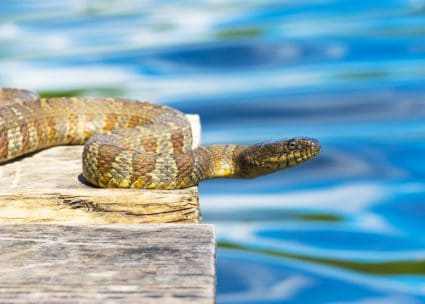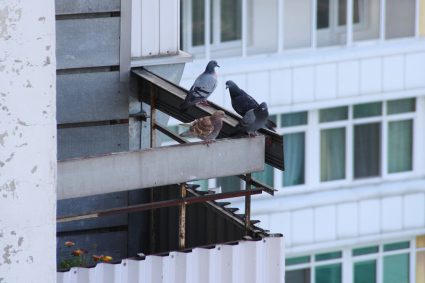
When it comes to maintaining a healthy, vibrant garden, few things can be as frustrating as dealing with pests. One such common garden pest is the vole. These small rodents can wreak havoc on your garden, damaging plants, bulbs, and even trees. In this comprehensive guide, we will provide detailed information on how to keep voles out of your garden effectively.
To keep voles out of your garden, clear the area of dense vegetation, install fencing around the garden, and use natural repellents like castor oil, capsaicin, and garlic. Encourage natural predators like owls and foxes, create gravel barriers, and use traps to capture and remove voles. If the infestation is severe, consider professional vole control services.
What are Voles?
Voles, often referred to as meadow mice or field mice, are small rodents related to lemmings and hamsters. With approximately 155 different species, voles have a stouter body, a longer hairy tail, a slightly rounder head, smaller eyes and ears, and differently formed molars compared to common mice.
Voles are particularly harmful to plants. They tunnel underground, eating roots and bulbs, and consume plant stems and leaves when above ground. Their voracious appetite can lead to severe damage to lawns, gardens, golf courses, crops, and orchards. They can also harm small trees and shrubs by gnawing on the bark, often hidden below winter snow.
Recognizing a Vole Infestation
Before we dive into how to keep voles out of your garden, it’s crucial to identify the signs of a vole infestation. Common signs include:
- Tiny trails or runways in your yard
- Collapsed plants
- Spongy soil
- Golf-ball-sized holes in the soil
- Damaged flowers and plants
- Markings on bark and plants
- Partially eaten root vegetables
- Damaged trees and shrubs
If you notice these signs in your garden, it’s likely that you have a vole infestation.
Methods to Keep Voles Out of Your Garden
Clear the Area
Voles prefer dense vegetation and avoid open spaces. Keeping the area around your garden well-mowed and well-weeded, and ideally bare, can discourage voles from settling in.
Install Fencing
Installing a low fence around your garden can help keep voles out. Ensure to bury it a bit underground to prevent voles from burrowing under it.
Use Natural Repellents
Natural repellents such as castor oil, capsaicin (found in hot peppers), and garlic can deter voles. Sprinkle these around your garden or create a spray by mixing them with water and biodegradable dish soap.
Encourage Natural Predators
Attracting owls, hawks, foxes, and snakes to your garden can help control vole populations. These predators can keep the vole population in check and maintain balance in the ecosystem.
Gravel Barriers
Voles dislike digging through gravel. Mix coarse gravel into flower beds or create a moat of gravel around beds to keep voles out.
Trapping
Use live traps or snap traps to capture and remove voles. Place the traps along vole runways or tunnels for optimal results.
Remove Food Sources
Protect bulbs by adding “turkey grit” or pea gravel to the planting hole, both at the base before planting the bulb and on top of the soil. This can dissuade voles from eating the bulbs.
Professional Vole Control Services
If the infestation is severe, consider resorting to professional vole control services. Companies such as Greenix Pest Control, Critter Control, Orkin, Ehrlich Pest Control, and EcoGuard Pest Management offer vole control and removal services.
Conclusion
Keeping voles out of your garden can be a challenging task, but with the right strategies and persistence, it is achievable. Remember, it’s essential to use a combination of methods for effective vole control. With these tips, you can protect your garden and enjoy its beauty without the worry of vole damage.
Frequently Asked Questions
What is the difference between a vole and a mole?
Voles and moles are different types of pests. Voles are small rodents that eat plant roots, bulbs, stems, and leaves. They are visible above ground and leave behind visible trails or runways in your yard. On the other hand, moles are insectivores that feed on insects, grubs, and earthworms. They stay underground, creating raised tunnels or “molehills” in your yard.
How quickly can voles reproduce?
Voles reproduce very quickly. They can start reproducing as young as one month old, and a single female vole can have 5-10 litters per year, each consisting of 3-6 young ones. This rapid reproduction rate can lead to large populations in a short time.
Are voles harmful to humans or pets?
Voles are not directly harmful to humans or pets. They don’t carry diseases like rats or mice. However, they can cause severe damage to your garden, lawns, and crops, which can indirectly impact your quality of life.
Can I use poison to get rid of voles?
Yes, poison can be used to control vole populations. However, it should be used as a last resort due to the potential harm it can cause to other wildlife, pets, and even humans. If you choose to use poison, it’s advisable to hire a professional pest control service to ensure it’s applied safely and effectively.
How long does it take to get rid of voles?
The time it takes to get rid of voles depends on the severity of the infestation and the methods used. It can take anywhere from a few days to a few weeks. Regular monitoring and consistent application of control methods are key to success.










